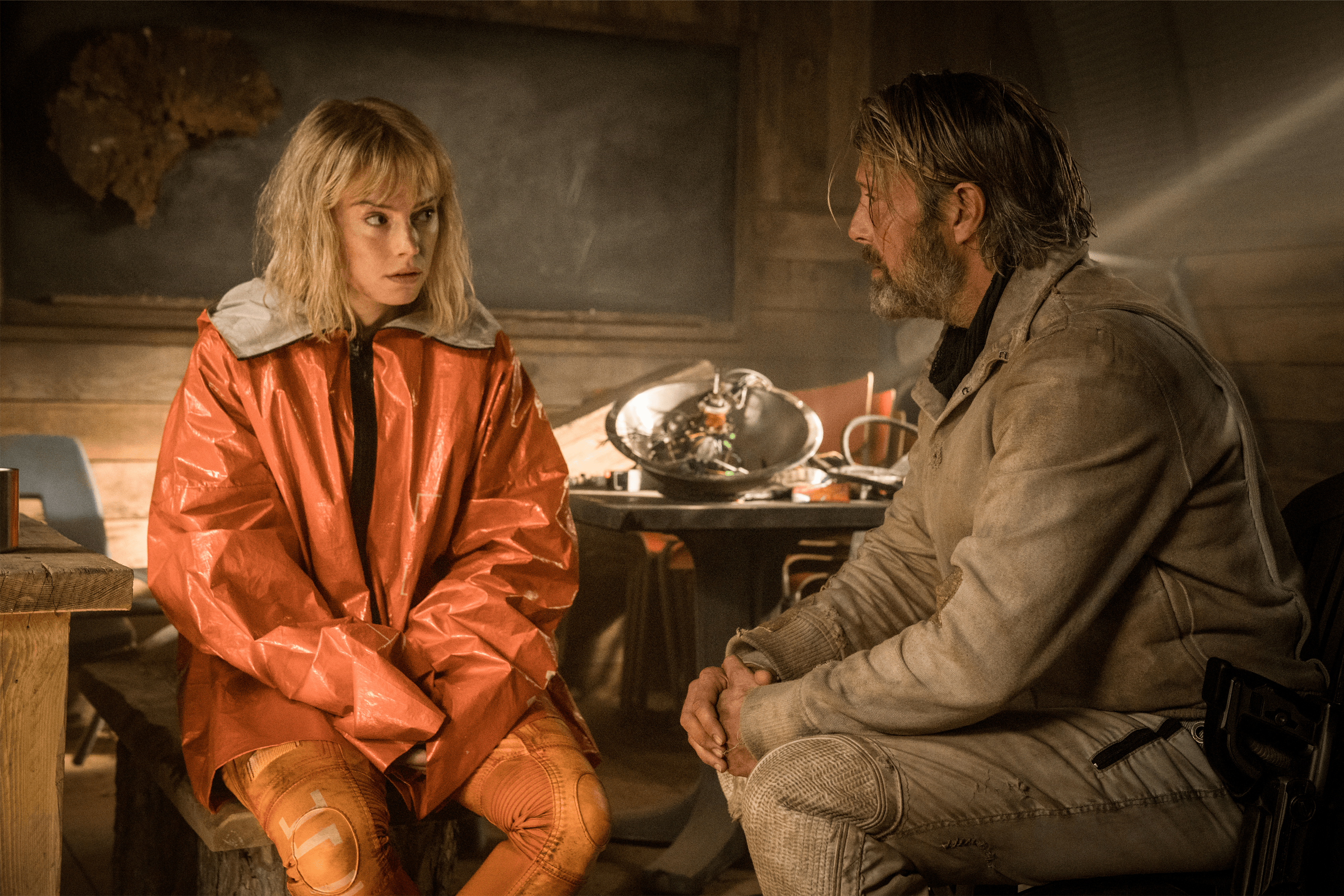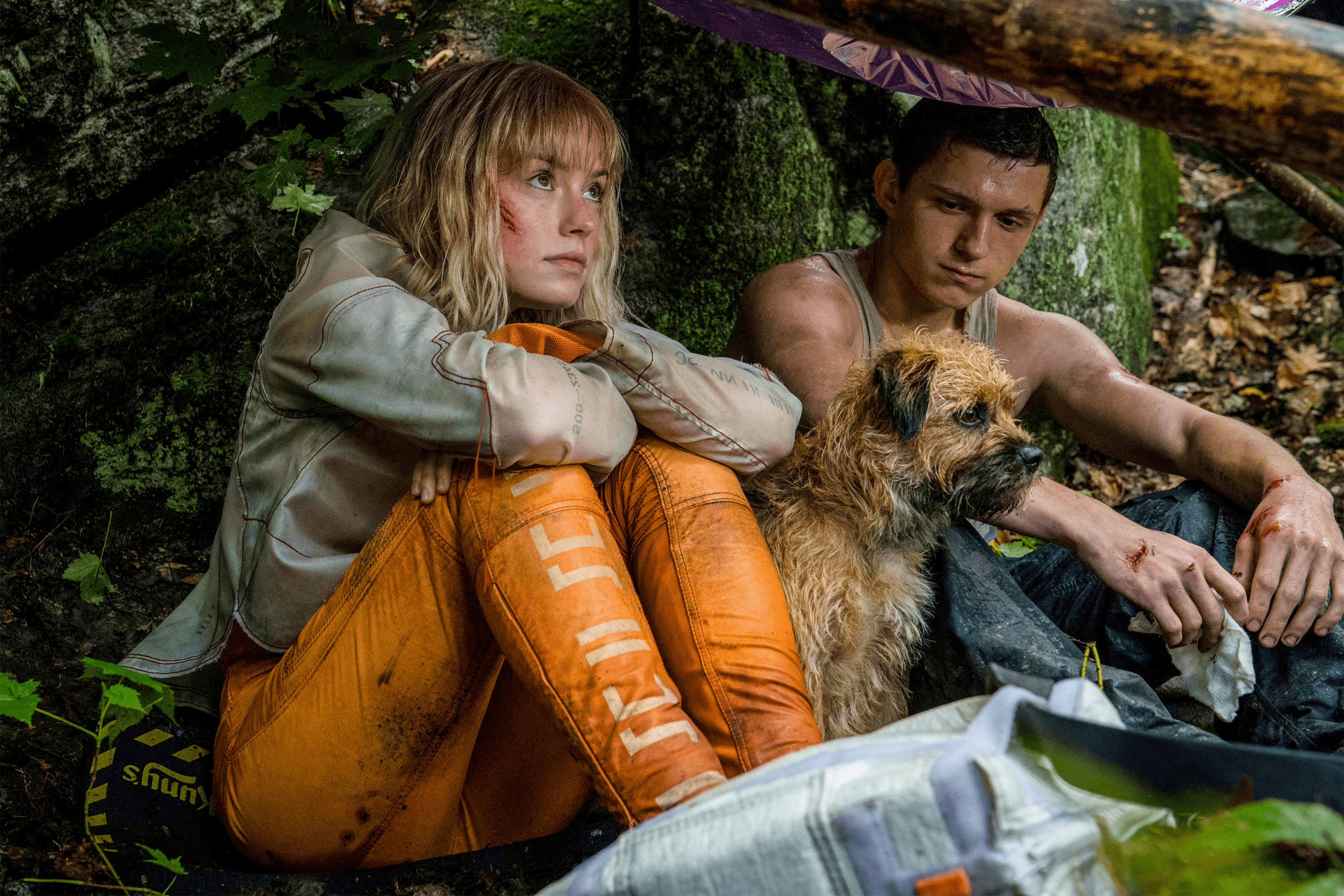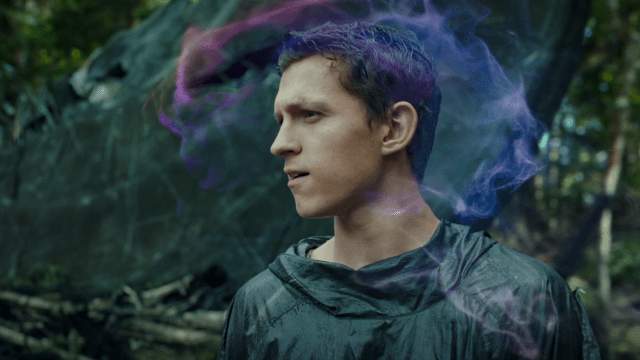Actually, let me take that back slightly — there is quite a lot of chaos in Chaos Walking, but only in the sense that attempting to navigate a coherent arc through its jumbled, disjointed scenes is a frustratingly messy ask of its audience. Despite its big names, Chaos Walking’s languid energy is certainly not worth navigating.
In theatres this week, Doug Liman’s (Jumper, Edge of Tomorrow) adaptation of the beloved Patrick Ness YA trilogy (Ness was eventually brought on to work on the screenplay alongside Christopher Ford) is hard not to think about in the context of its long road to the big screen. Itching for a new franchise to step out of the shadows of its success with The Hunger Games, Lionsgate acquired the rights to the series a decade ago. It took another five years for the film to find its stars in Spider-Man: No Way Home’s Tom Holland and Star Wars’ Daisy Ridley, who were then just on the cusp of becoming some of Hollywood’s hottest stars in their respective cinematic universes.
But the project went silent for years, delayed from its 2019 release date by first the need for extensive reshoots on a film purportedly described as “unreleasable” by Lionsgate employees and then the global coronavirus pandemic. Now, it’s coming out in a quiet March, and even though so many theatre locations are still closed for ongoing covid-19 restrictions, it’s doing so as a strictly theatrical release. Knowing all of this makes it understandable that Chaos Walking feels like Liman found himself with a jumble of disparate scenes to stitch together into something that loosely resembles a cohesive narrative, pushed out with little fanfare or perhaps with no expectations that it will perform well. Because attempting to parse Chaos Walking otherwise is, well, an exercise in chaos.
Set on a distant alien planet called New World, Chaos Walking follows Holland’s Todd Hewitt. The first wave of human colonists on this world discovers that men, and only men, develop a psychic ability known as “The Noise” that perpetually projects their inner monologue in a cloud around their heads. Growing up in a settlement, Prentisstown, made up entirely of men — after a war between the colonists and a native species called the Spackle wiped out seemingly every woman in society — Todd finds himself thrust on a strange quest when he crosses paths with Ridley’s Viola. She’s a young survivor of a crash-landed shuttlecraft from the incoming second wave of human resettlers, who know nothing of what’s happened to their predecessors. Forced to work with someone whose entire thought process is inadvertently exposed to her, whether he wants it to be or not, Viola has to find a way to contact her fellow colonists to warn them of the trials and tribulations that await on New World.
It’s an interesting premise, but one that in adaptation Chaos Walking completely fails to explore beyond a surface level. The story meanders its way across two hours of what is, mostly, Todd and Viola walking (to be fair, sometimes they’re running from people, like Mads Mikkelsen’s villainous mayor Prentiss, the ruler of the township Todd grew up in) from place to place slowly getting to know each other. The effect of the Noise itself is briefly leveraged to interesting effect a few times, like to make mental projections of other people or obstacles as an act of illusion. Otherwise, Ness and Ford’s script brushes over some of the most interesting questions raised by its central concept, which, combined with its inability to examine why some men on New World have greater control over how much of their Noise is exposed, makes its application feel scattershot.

It’s a problem that persists as Chaos Walking’s thin narrative expands beyond the borders of Todd’s home and starts poking at a larger world he’s been hidden from for his entire life. Allusions are made to a grander scale in Ness and Ford’s script, both from a world-building and a character-building perspective, but they’re only briefly touched on before the film sharply moves on, never given the time to be explored beyond the surface. The Spackle, for example, are referred to repeatedly and almost entirely derogatorily throughout the movie. However, the species are barely seen and don’t really feel relevant to the plot outside of a single throwaway line touching on the colonialist themes of humanity’s presence on New World. The groundwork is likewise laid for commentary on the toxic masculinity that’s arisen from Prentisstown’s male-only society, but it’s pushed aside, either left at the periphery of Todd’s character arc or to turn Mikkelsen’s Prentiss into a more non-descript villain, robbing the film of any potential energy in the process.
Speaking of the main villains of the film, there are two equally lacklustre ones: the aforementioned Prentiss, who has desires to go to war with the other colony settlements he’s kept hidden from his town’s residents, and David Oyelowo’s pastor Aaron, a threadbare figure who exists solely to spout vaguely religious portents of doom and occasionally chase Todd and Viola. Although the former at least has some element of drama in his initial relationship to Todd, Prentiss and Aaron alike feel so distinctly lacking in motivation beyond the bare minimum for them to be villainous that it’s hard to care about them. Nothing ever feels like it goes beyond the potential the film only barely deigns to hint at, outside of the original thought experiment of the Noise as a concept. Even that doesn’t play all too well in adaptation, with Liman’s focus instead drawn to lots of quiet scenes of actors staring at each other, as limited voiceover of their internal thoughts becomes the dominant expositionary tool.

Holland and Ridley, at least, do the best they can with the material provided. Todd and Viola are, by their natures, reserved young adults, and much of the clunky road from their initially hostile relationship to becoming something potentially romantic is largely sold purely by the actors’ chemistry, if not by the script itself. An underlying theme that makes that transition feel so unnatural is the aforementioned undercurrent of Todd’s concept of masculinity repeatedly clashing with his burgeoning relationship with Viola. Many of his more stressful encounters with her are prefaced with his external-internal monologue psyching himself up by repeating “Be a man!”
In addition, Todd’s Noise exposes his physical desire for her repeatedly, and in ways that are not portrayed particularly lightly, often to the point of Viola being distinctly and rightfully uncomfortable. The sudden shift beyond that initially grimy relationship and into something more by the time the film suddenly freewheels into its climax feels completely unearned as a progression. It reads — and with the context of its production, it feels likely — like there were multiple scenes of their bonding left on a cutting room floor in favour of Liman evoking an unearned scale for the proceedings through long shots of them aimlessly and silently (save for Todd’s almost-ceaseless Noise) through pretty forests.
And that’s really just Chaos Walking at large, a series of scenes that sort of work stitched together, but don’t feel natural together at all, scuppering its half-hearted attempts to find another YA dystopia to become a box-office hit. Chaos definitely walks among its muddled intents, but perhaps not in quite the poetic way Ness’ original work intended it to.
Chaos Walking is out now in Australian theatres.
